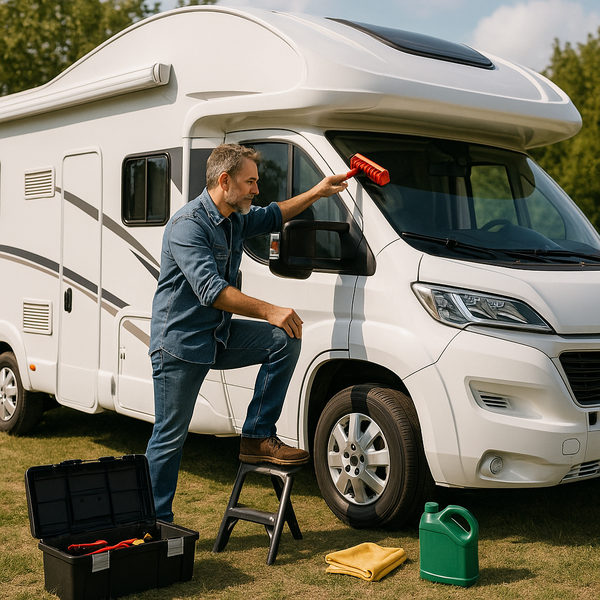
Ensuring your recreational vehicle remains in optimal condition is crucial for safe and enjoyable travels. Regular maintenance not only extends the lifespan of your RV but also helps prevent unexpected breakdowns and costly repairs down the road. By dedicating time to routine checks and care, you can protect your investment and enhance the overall experience of life on the open road.
Seasonal RV Maintenance Checks
Performing seasonal maintenance on your RV is a proactive way to address potential issues before they become major problems. At the start of each travel season, inspect the exterior of your RV thoroughly. Check the roof for any signs of leaks or damage, paying close attention to seams and sealants around vents and skylights. Examine the caulking around windows and doors, repairing any cracked or missing areas to prevent water intrusion.
Tires are another critical component that requires regular inspection. Check the tire pressure before each trip, ensuring they are inflated to the manufacturer's recommended PSI. Inspect the tire treads for wear and tear, and look for any cracks or bulges in the sidewalls. Don't forget to check the spare tire as well. Properly maintained tires are essential for safe handling and fuel efficiency.
Inside the RV, test all appliances to ensure they are functioning correctly. This includes the refrigerator, stove, microwave, air conditioner, and furnace. Clean filters and vents to ensure optimal performance. Check the smoke detector and carbon monoxide detector batteries, replacing them as needed.
Maintaining Your RV's Systems
The plumbing system in an RV requires specific attention. Regularly inspect all pipes and connections for leaks. Flush the holding tanks (black and gray water) properly after each use and clean them periodically to prevent odors and buildup. Sanitize the freshwater tank at the beginning of the season and after long periods of storage.
The electrical system is equally important. Check all interior and exterior lights, and replace any burnt-out bulbs. Inspect the battery terminals for corrosion and clean them as necessary. Ensure the converter/charger is working correctly to maintain battery health. If your RV has a generator, follow the manufacturer's maintenance schedule, which typically includes regular oil changes and filter replacements.
The engine and chassis components of a motorhome require maintenance similar to a standard vehicle. Follow the recommended service intervals for oil changes, filter replacements, and fluid checks (coolant, brake fluid, power steering fluid). Inspect belts and hoses for cracks or wear. Lubricate chassis components as recommended by the manufacturer.
RV Exterior Care and Protection
Keeping the exterior of your RV clean is more than just aesthetics; it protects the finishes and sealants. Wash your RV regularly using appropriate cleaning products designed for RVs. This helps remove dirt, grime, and environmental contaminants that can damage the paint and sealants.
Waxing or applying a protective coating to the exterior can help protect against UV rays and environmental damage, keeping the finish looking good and extending its life. Pay special attention to cleaning the roof, as it is exposed to the harshest elements. Use non-abrasive cleaners specifically designed for RV roofs.
Inspect the awning for any tears or damage and clean it regularly to prevent mold and mildew growth. Ensure it extends and retracts smoothly. Check all exterior storage compartment seals to keep contents dry and secure.
Preparing Your RV for Storage
Properly preparing your RV for storage, especially for winterization in colder climates, is critical to prevent damage. This typically involves draining all water systems (freshwater, hot water heater, holding tanks) and adding RV antifreeze to the plumbing lines to prevent freezing.
Remove or disconnect batteries to prevent discharge and store them in a safe place if necessary. Cover exterior vents and openings to prevent pests from entering. Use an RV cover to protect the exterior from the elements during storage. Following a detailed winterization checklist can save you from expensive repairs in the spring.
Common RV Maintenance Tasks
Beyond seasonal checks, several maintenance tasks should be performed regularly or as needed. These include lubricating slide-outs and leveling jacks to ensure smooth operation. Inspecting and cleaning propane system components is essential for safety. Always check connections for leaks using a soapy water solution.
Regularly check the condition of brake pads and rotors, especially if you have a towable RV. Ensure the brake lights, turn signals, and running lights are all functioning correctly. Inspect the towing hitch and connections on towable RVs for wear and proper function.
Keeping records of all maintenance performed is highly recommended. This helps you stay on schedule with routine tasks and can be valuable information if you ever decide to sell your RV.
Investing time in regular RV maintenance is an investment in your travel freedom and peace of mind. By staying on top of these essential tasks, you can ensure your home on wheels is always ready for your next adventure, making memories without the worry of preventable issues.

